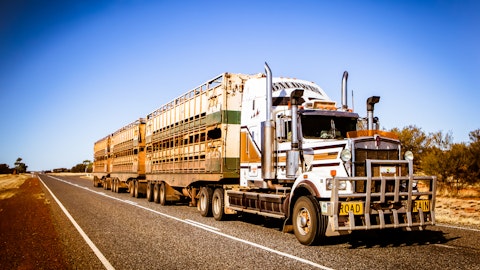Gerry Laderman: Well, Conor, there’s no question there’s been an industry reset on costs, and I think Scott did a nice job sort of describing that and the cost convergence ahead. For us, if you just look at our guidance we put out about six months ago for 2023, there’s been movement. There’s no question, probably about 9 points. 3 points of that is just the capacity difference between what we thought 6 months ago versus what we’re thinking today. Another 3 points in the labor numbers we put in, the rest is inflation and buffers. But what’s important for the United Next plan is the relative cost story, which remains very intact. So, whether it’s the mainline gauge benefit we’re seeing — we will see from all the additional aircraft or less reliance on single-class 50-seat aircraft that have come out and will continue to come out of the operation. We’re very comfortable in the United Next cost story as it’s been adjusted for the industry cost impact.
Operator: Our next question is from Catie O’Brien from Goldman Sachs.
Catie O’Brien: Maybe just coming at the revenue question a little differently, maybe for Scott or whoever else wants to answer. How do you think about getting back to airline revenue as a percentage of GDP? I think that makes a lot of sense conceptually. But, do you think the industry gets there on pricing if volume versus GDP is lower given the capacity constraints we talked about?
Scott Kirby: Well, I mean, if you go back and look at history, while load factors have gone up a little, I wouldn’t expect a lot of change in load factor. And if you went back a few years, pricing in real terms was higher — it remains a great value. I mean, air travel prices are probably 50% lower than they were about 30 years ago in real terms. And you can still frequently pay more for your Uber to the airport than you do for your airline ticket to Florida. And so, I think — but I think that what this means is the era of $4 prices from Los Angeles to Cabo at $7 from New York to Florida or $9 from Houston to Central America are probably a thing in the past. And cost convergence — it’s up to other airlines decide how to price the product.
But I’m pretty sure it’s not after them what’s happening to their cost structure. And as that is changing, we see it happening already. It is what happened last year. It’s what changed last year. We see that continuing, to Andrew’s earlier point, too, I look at the data as well and following our revenue management team is doing a great job. But the yield curve for February is higher than January. The yield curve for March is higher than February. And the yield curve for the second quarter is higher than March. And by the way, bookings are ahead in all periods. So, I think it’s a structural reset. I think it is the investor store or aviation, I think it’s good for everyone. I think it’s particularly good for airlines like United that have the sophistication, the technology, the infrastructure to operate in this more challenging environment.
But it’s good for everyone. And it’s just a structural reset that’s reversing what happened over the past couple of decades, at least a possibility of it. I think it’s likely, but we’ll see it at least a possibility.





